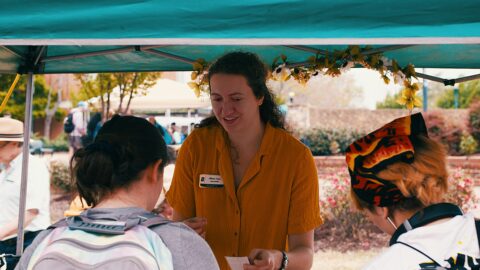In the second instalment of our “Embedding a Volunteer Culture” blog series, Lynn shares the benefits of ensuring volunteer involvement from the outset as well as maintaining a clear vision of their place within an organisation.
The volunteer program springs from the Museum’s strong belief in the importance of social inclusion. Museums in the twenty first century need to actively involve people from every level of their community …. Imperial War Museum North is wholly committed to lifelong learning … the program is a vital element of our accessible learning strategy that appeals to local – as well as national – audiences and encourages community involvement.
Jim Forrester, Director, IWM North
When IWM North opened its doors to the public in 2002 they were welcomed by a team of people, a great number of whom lived locally in the then regeneration area of Trafford. Many of those were volunteers who were, as I said at the time, ‘in with the bricks’: we recruited and started to involve around 250 volunteers whilst the museum was being built, and as the above quote shows, volunteering was at the heart of the museum’s strategy.
As a multi-site charity already engaging volunteers, with a volunteer board and strong volunteer belief and leadership at Executive level, the new museum was well placed to take volunteering to new heights – both in terms of reaching non-traditional volunteers and embedding volunteering in the new organisation.
With all of these ducks in a row, the cultural expectations of staff and volunteers – existing and those being recruited – were set well in advance, and this pro-volunteering culture permeated every aspect of the museum’s operations.
Of course, people move on, and sometimes new colleagues are less aware of volunteering’s role and power. They won’t necessarily relate to or understand the culture. This is why it’s crucial that everyone coming into an organisation is made aware of that culture from the first exposure: through job adverts, taster sessions, interviews, induction and training – right through to exit interviews.
Staff and volunteers should always be inducted and trained together whenever possible. Mess facilities should be shared, and reward and recognition should apply to everyone.
This guest blog is by Lynn Blackadder, a coach and consultant with 22 years’ experience of helping organisations involve volunteers.




